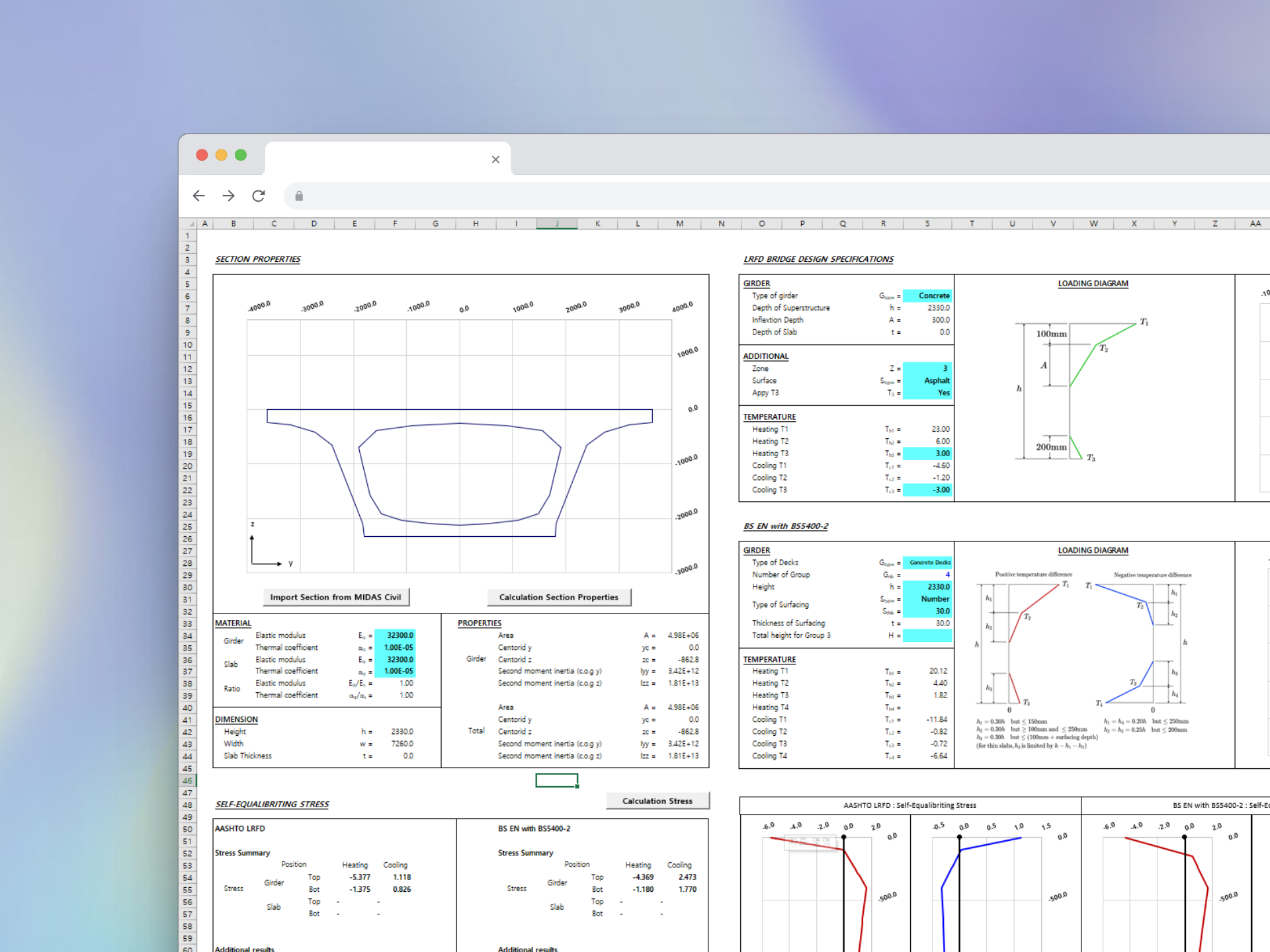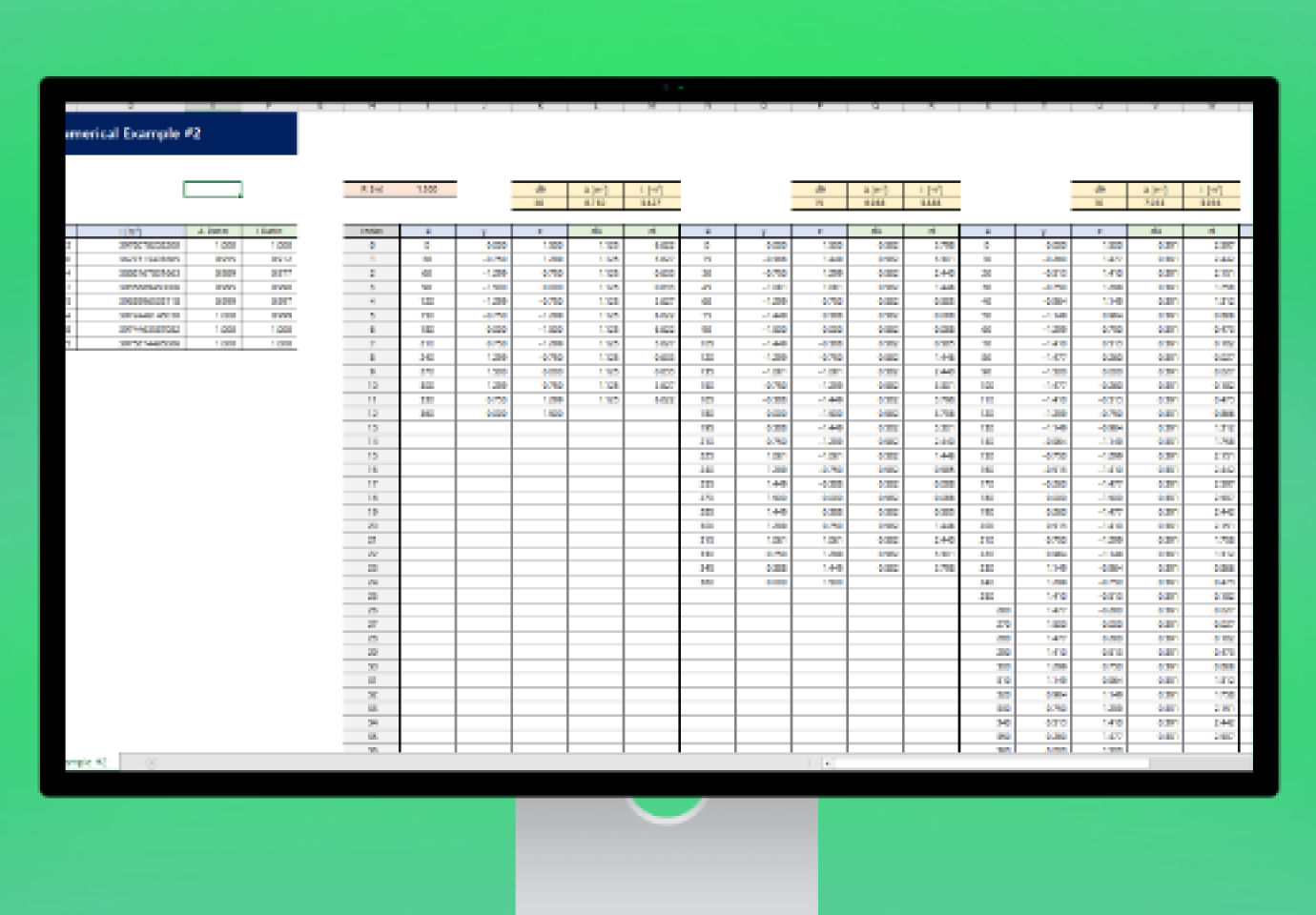📢 To check the entire series, click here
- Non-linear Temperature Gradient Part 1. AASHTO LRFD
- Non-linear Temperature Gradient Part 2. BS Code & Eurocode
- Non-linear Temperature Gradient Part 3. Effects on Beams
- Non-linear Temperature Gradient Part 4. Effects on Bridges
Temperature gradient load is one of the loads that is generally used in the design of the superstructure of a bridge. For designing a bridge superstructure, you will likely need to consider the effects of temperature gradient load.
Many structural analysis programs, including MIDAS Civil, allow for the input of temperature gradient loads and can relatively accurately calculate their effects. However, as one becomes more familiar with using structural analysis programs, it is easy to overlook the impact of these loads on the structure and why certain results are obtained.
AASHTO LRFD (American Association of State Highway and Transportation Officials Load and Resistance Factor Design) and BS EN (British Standards European Norms) are two major design standards used for bridge design. Let's take a closer look at how temperature gradient loads are calculated in these design standards.
1. AASHTO LRFD - Bridge Design Specifications (2020)
(1) Temperature Gradient
AASHTO LRFD's temperature gradient load is described in section 3.12.3 "Temperature Gradient," and it has remained unchanged from the 1998 2nd edition to the most recent 2020 9th edition. The same calculation method has been used consistently in all editions, without any significant changes.
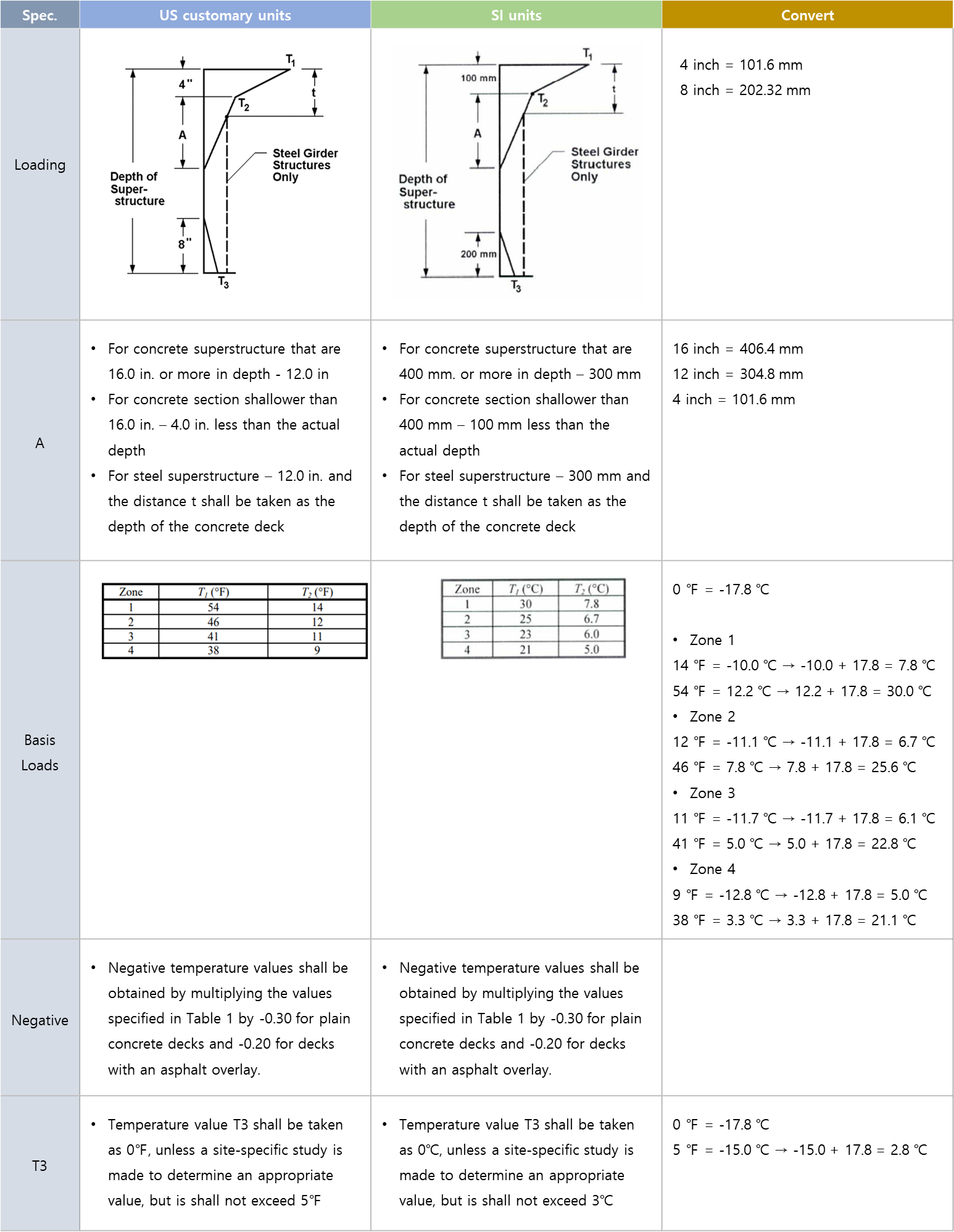
AASHTO LRFD - Temperature Gradient
The temperature gradient load in AASHTO LRFD is relatively simple in its calculation method, making it easy to apply and consider for the design.
Now let's take a brief look at how AASHTO LRFD calculates its temperature gradient load.
According to the commentary of AASHTO LRFD, the loads applied to concrete bridges are based on NCHRP Report 276.
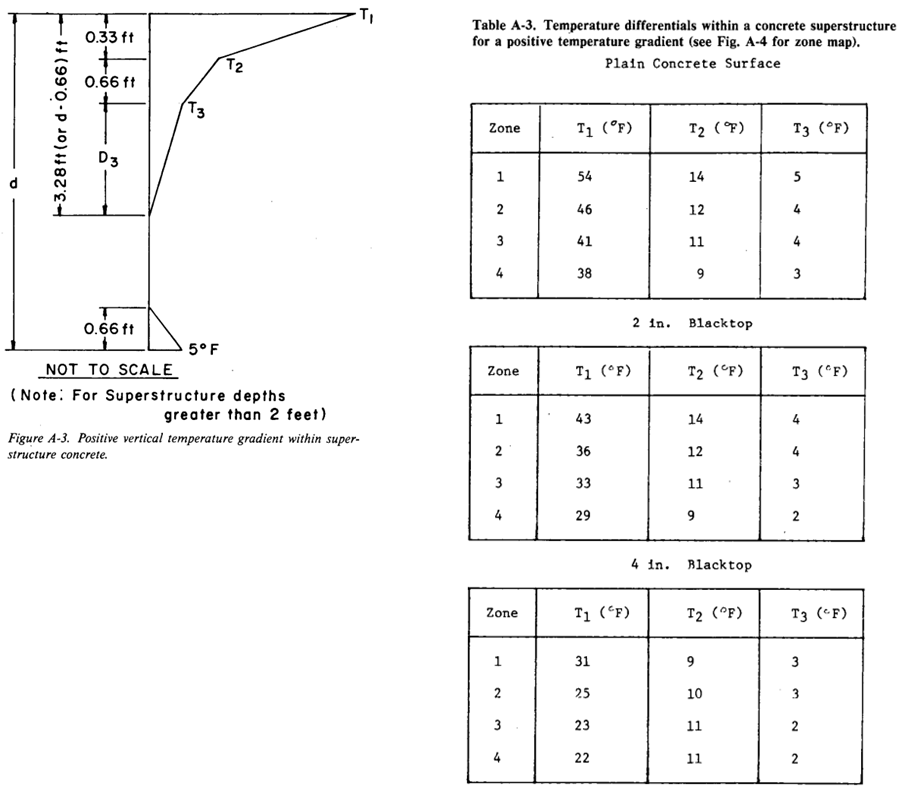
NCHRP report 276 - Figure A-3 Positive vertical temperature gradient within superstructure concrete
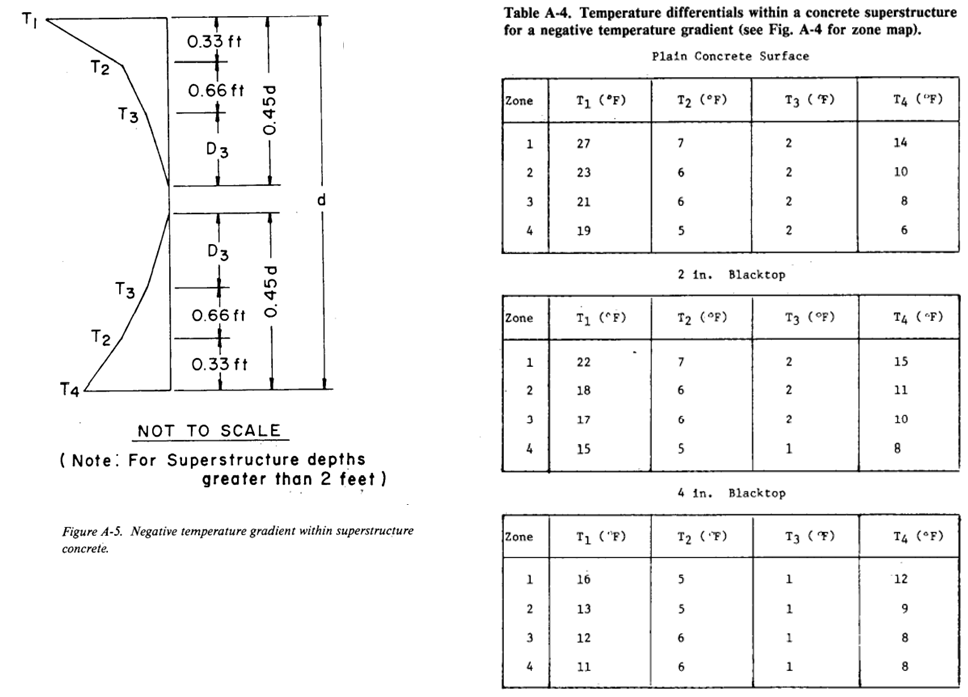
NCHRP report 276 - Figure A-5 Negative vertical temperature gradient within superstructure concrete
Loads are classified according to pavement conditions. Plain/Unpaved, 2 in. Blacktop, or 4 in. Blacktop.
In the case of positive loads, the current AASHTO LRFD load size and load distribution are similar, but for negative loads, there is a significant difference.
The changes in these differences can be seen in "Design of segmental bridges for thermal gradient, KW Shushkewich, PCI journal, 1998". The figure below compares the temperature gradient load for each standard in the case of a plain concrete surface with a height of 8ft, Zone 3.
- AASHTO Segemtnal Guide Specification (AASHTO 89)
- AASHTO LRFD Bridge Design Specifications (AASHTO 94)
- AASHTO proposed segmental Guide Specifications (AASHTO 98)
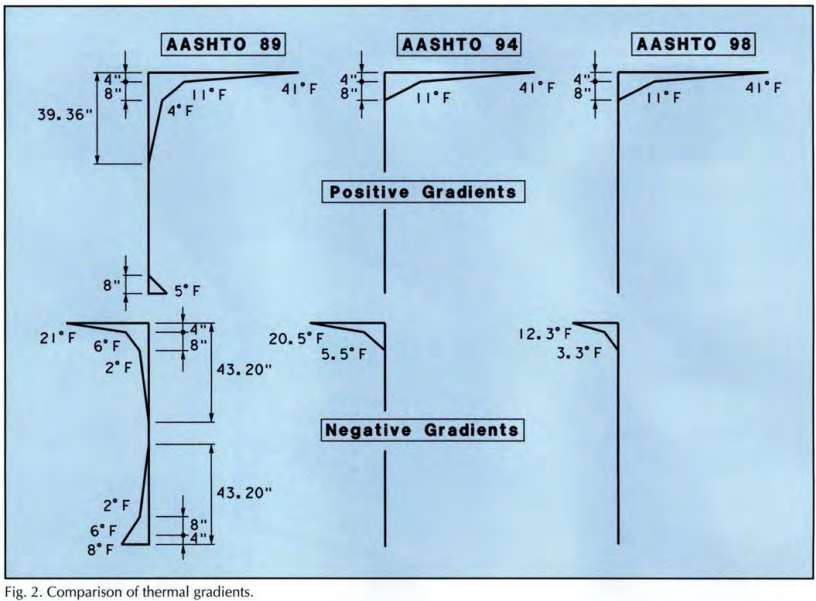
Design of segmental bridge for thermal gradient - fig 2. Comparison of thermal gradients
As seen in the figure, AASHTO 89 directly cites NCHRP Report 276.
AASHTO 94 has since changed to a form that is similar to the current one, but for Negative values, it still uses -0.5 times the value for Positive values.
AASHTO 98 is currently the most similar to the current form, using Negative values as -0.3 times Positive values. According to this article, the results have been validated for the AASHTO 98 standards.
For steel bridges, the pattern of the Australian bridge specifications was used, and AS 5100.2 states that the temperature after passing through the slab is applied directly to the entire steel girder. AASHTO LRFD also uses the same concept.
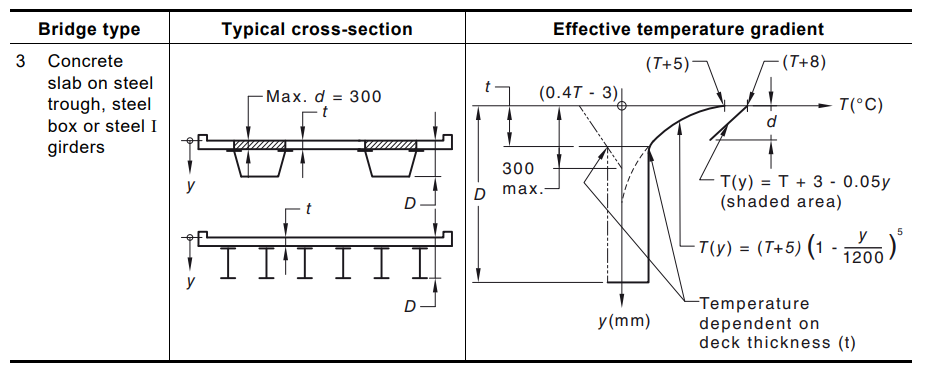
AS 5100.2 Figure 18.3 Design effective vertical temperature gradients
(2) Calculation of Temperature Gradient - AASHTO LRFD
The Excel Spreadsheet is created for calculating AASHTO LRFD temperature gradient loads as follows.
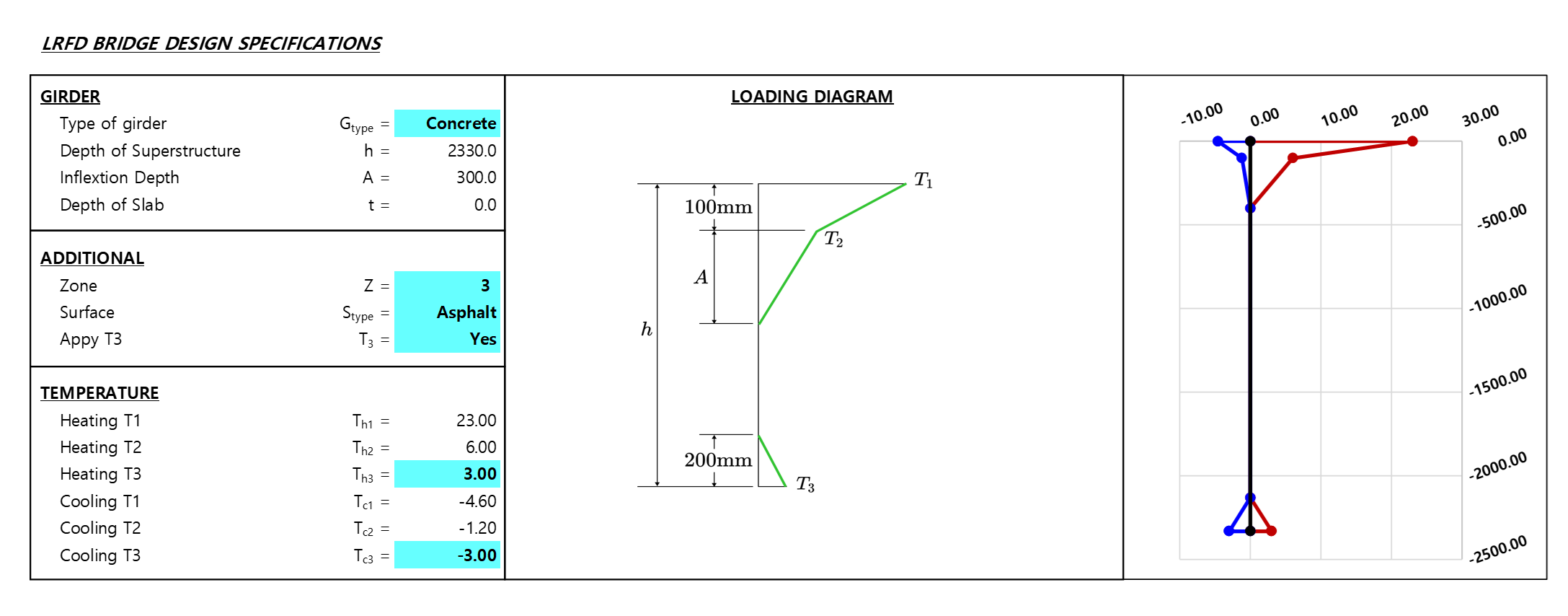
Calculation Example - AASHTO LRFD
Would you like to use the mentioned Excel Spreadsheet in the content?
Submit the form below right away, and receive the file
for calculating AASHTO LRFD temperature gradient loads.
(Note! This spreadsheet requires access to the MIDAS CIVIL API for utilization.
If you have any inquiries regarding the CIVIL API, please feel free to leave a comment.)
👉🏻 Download Now
 Get Started midas Civil
Get Started midas Civil
 Featured blog of this week
Featured blog of this week







